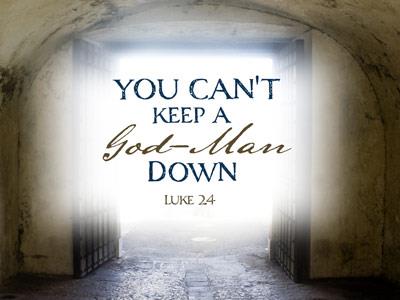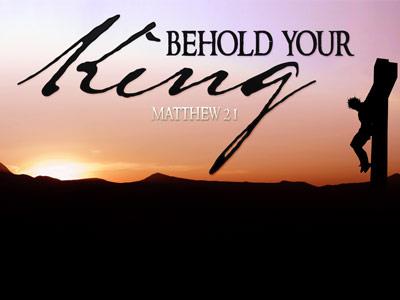-
Behold, The Lamb Of God Series
Contributed by Jeffery Anselmi on Apr 19, 2025 (message contributor)
Summary: Jesus is the Lamb of God. What does that mean for me?
Behold, The Lamb Of God
Jeffery Anselmi / General Adult
Easter Series / Lamb of God / John 1:29; John 1:35–37
Jesus is the Lamb of God. What does that mean for me?
INTRODUCTION
- It is Resurrection Sunday!
- This is a time to celebrate this wonderful holiday that represents the greatest event (next to the birth of Jesus) in history!
- God offers us the greatest gift of eternal life through His Son Jesus, who died on a cross for our sins.
- While dying is not a significant event, rising from the dead is!
- Jesus defeated death on the third day when Satan thought he won the war!
- As we gather today, let us direct our hearts and minds to a profound moment in the life of Jesus Christ.
- It is encapsulated in a simple yet powerful declaration made by John the Baptist: "Behold, the Lamb of God, who takes away the sin of the world!" found in John 1:29.
- This statement calls us to pause, reflect, and truly understand the depth of who Jesus is and what He came to accomplish.
- Today, we will delve into this significant declaration.
- We will examine the identity of Jesus as the Lamb of God, the purpose of His coming, and how this truth should transform our lives.
- Easter celebrates the resurrection, but it finds full meaning in light of the cross.
- The Lamb who was slain has conquered sin through His death and triumphed over death through His resurrection.
- Jesus rises not as a different figure, but as the Lamb who has completed His mission — living proof that the sacrifice was accepted, the judgment was satisfied, and salvation secured.
- Today our focus will be on a passage that took place early in the ministry of Jesus.
- John the Baptist had already baptized Jesus, and following His baptism, He led Him into the wilderness for 40 days to undergo temptation.
- In our main passage today, Jesus is returning victorious from the temptation in the wilderness when John the Baptist sees Jesus approaching him.
- It may not seem like a typical Easter passage to use; however, the message of John 1:29 gives meaning to what happened at the crucifixion and the subsequent resurrection.
- John the Baptist was a pivotal prophetic figure who preached about repentance and the coming of the Messiah.
- His baptizing activity, especially in the Jordan River, symbolized purification and a return to God.
- He was considered a forerunner to Jesus, and his primary role was to prepare the way for Jesus's ministry.
- John the Baptist forges ahead, unveiling the essence of Jesus and outlining the purpose of the Messiah!
- Easter celebrates the resurrection, but it finds full meaning in light of the cross.
- The Lamb who was slain has conquered sin through His death and triumphed over death through His resurrection.
- Jesus rises not as a different figure, but as the Lamb who has completed His mission — living proof that the sacrifice was accepted, the judgment was satisfied, and salvation secured.
- Let’s move to our passage as we see what John the Baptist says about Jesus!
John 1:29 NET 2nd ed.
29 On the next day John saw Jesus coming toward him and said, “Look, the Lamb of God who takes away the sin of the world!
SERMON
I. Who is the Lamb?
- As I mentioned in the introduction, Jesus has returned from being in the wilderness for 40 days, facing temptation from Satan.
- John sees Jesus approaching.
- Then John makes his statement concerning Jesus.
- John the Baptist’s declaration connects Jesus directly with the concept of the sacrificial lamb from the Old Testament.
- In the Jewish context, the lamb was central to several key rituals.
- The Passover lamb (Exodus 12)—A lamb without blemish was slain, and its blood placed on the doorposts of Hebrew homes.
- The angel of death 'passed over' these homes during the final plague in Egypt.
- Jesus becomes the ultimate Passover lamb whose blood delivers us from spiritual death.
- The daily temple sacrifices.
- Lambs were sacrificed morning and evening to atone for the sins of the people (Exodus 29:38-42).
- Jesus is presented as the final and sufficient substitutionary sacrifice.
- The suffering servant of Isaiah 53
- Isaiah prophesied one who would be 'led like a lamb to the slaughter.'
- This connects Jesus with the image of a silent, willing Savior bearing humanity’s iniquity.
- So when John the Baptist says, 'Behold the Lamb of God,' it is more than poetic language.
- He is identifying Jesus as God's appointed sacrifice—the fulfillment of centuries of sacrificial symbolism.
- This imagery is rooted in Jewish sacrificial traditions.

 Sermon Central
Sermon Central



